| Rasboras | |||||||||||||||||||||||||||||||
 | |||||||||||||||||||||||||||||||
| Rasboras are members of a group of small minnow-type fish belonging to the Family Cyprinidae. Currently the genus Rasbora contains around 70 species, which can be found in parts of Southeast Asia (Malaysia, Singapore, Sumatra and southern Thailand), and Africa. Rasboras inhabit streams and other watercourses characterized principally by low mineral content, high concentrations of dissolved humic acids, a consequence of those waters flowing through peat swamp forests. The waterlogged soils of these forests inhibit the complete decay of leaf litter, and result in the formation of peat, which leaches humic acids and related compounds into the watercourses flowing through these forests. The conditions thus resemble those found on a different continent, namely the blackwater habitats of South America. Most of the rasboras are small, up to 10 cm long. They share the same family with many popular aquarium fishes such as the goldfish, koi, barbs and danios. Rasboras are the ideal fish for the community aquarium as most are small, peaceful, colorful and easy to care for. In their natural environment many come from soft, slightly acid water. In an aquarium they are tolerant of most aquarium conditions as long as the water is well-filtered and partial water changes are conducted regularly. Rasboras are considered very hardy fish and can tolerate a wider pH range of 5.5 to 7.8, and hardness ranges from zero to 15°dH. The temperature range for Rasboras is around 22°C to 27°C. They are fast swimming shoaling fish, and should be kept in a group comprising a minimum of six individuals, though shoals of larger numbers are preferable not only from the standpoint of the well-being of the fish, but from an aesthetic standpoint - a large shoal of Rasboras presents a striking vista even to non-fishkeepers, and their active disposition in the water adds to the spectacle. Being a peaceful species, the Rasboras may be maintained in a community aquarium setup with other similarly sized and peaceful aquarium fishes, including many of the small Tetras, Danios, Pencilfish, Corydoras, Plecos and others. An aquarium intended to house Rasboras should be well planted with some open areas for swimming. Most Rasboras are egg-scattering spawners, however, in some rasbora species (such as Harlequin Rasbora), they will deposits adhesive eggs on the underside of the leaves of plants such as Cryptocoryne and Aponogeton, these being among the plants that inhabit the Rasbora's native waters. The female will swim in an inverted position beneath a chosen leaf, rub her belly along the leaf in preparation for spawning, this action seemingly encouraging the male to join in spawning. When the male joins the female, he adopts a similar inverted position alongside her, and as the female extrudes her eggs and attaches them to the underside of the leaf, the male curls his tail fin around the body of the female and with a trembling motion, emits the sperm that will fertilize the eggs. The fishes repeat this course of action over a period of 2 hours or more, during which a large and well-conditioned female may deposit as many as 100 eggs. The lifespan of Rasboras has not been systematically determined, but individuals in the aquarium can be expected, with good care, to live for 5 to 6 years. | |||||||||||||||||||||||||||||||
| |||||||||||||||||||||||||||||||
| |||||||||||||||||||||||||||||||
|
Free Template Blogger collection template Hot Deals BERITA_wongANteng SEO theproperty-developer
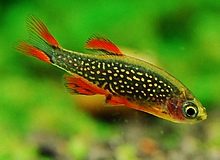
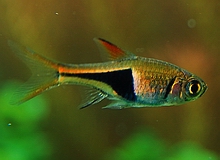
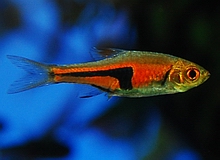
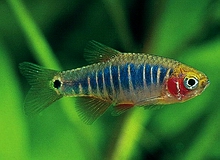
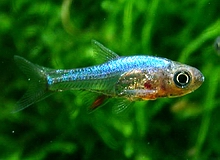
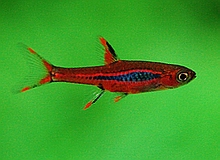
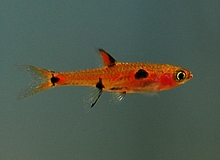
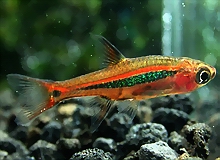
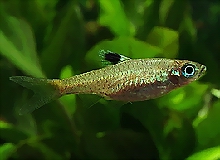

0 comments:
Post a Comment